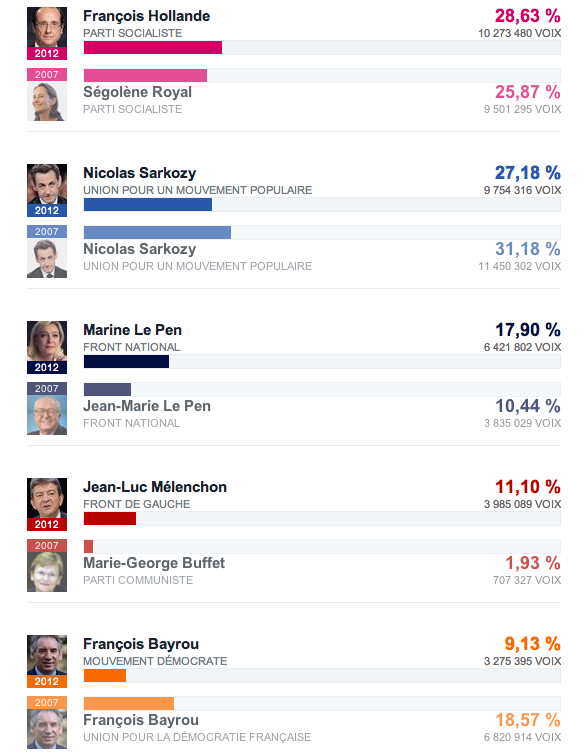The US is not the only country with elections in 2012. Actually quite a few other places have had them, will have them, or are in the midst of having them. The latter includes France, which had the first round of its presidential election earlier this week.
To put it simply, France has a first round to narrow the whole field to just two candidates—lots of democracies outside the US have multiple party systems that mean more than just two parties—and then a second round between the last two. Nicholas Sarkozy was thought likely to win the first round and then lose the second, but he instead lost the first outright. He still isn’t expected to do well in two weeks’ time. But, the French media of course produce infographics just as US, Canadian, and British media do. Except unlike the last three, French infographics tend to be in French and I tend to not read them because, well, I cannot.
But pictures and colours make it easier. Socialists like red. Centre-right like blue.
From Le Figaro comes a map of the results. The island-looking thing on the right is Paris, beneath that Corsica, and then the bottom are the various overseas territories and departments that all vote.

The question with French presidential elections—and in fact any country that has run-off elections—is what happens to the voters of the losers? For whom will they vote in the second round? Le Figaro also has an interactive piece that allows the user to play out different scenarios based on how many voters will not show up and of those who do, how they split their vote. Again, it’s in French, so I had to assume some things when playing around with the controls and then know a few things about French politics.

From Le Monde, another respected French media source that I have featured on more than one occasion, come some simpler visualisations of the results but with some nice features for comparison. The first is obviously a look at the 2007 results. (Anybody recall Segolene Royal? Her ex-husband/partner is Francois Hollande…the guy running for the Socialists this time round.)

But another interesting view is that of the results strictly from 2012’s first round.

But with the added feature of comparing those results per party to their performance in 2007.

There are always interesting things going on in politics when it comes to data visualisation and infographics. We just have to look outside the US from time to time.




